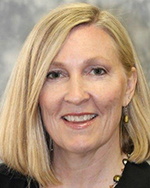Editor’s Note: The opinions expressed in this blog post are solely those of the author.
“There was a rhythm to the days in Poplar….church on Sunday, clinic on Tuesday afternoon, wages paid each Friday and babies born early, late, and hardly ever when expected—but that they would arrive was never doubted or that for some there would be pain as well as joy.”
In this episode Sister Winifred tries to connect with an expectant prostitute and evoke behavior change. Barbara works with a family where the husband puts pressure on his wife to bear a son. Sister Monica Joan feels redundant as the busy midwives go about their work. Tom has a meeting with the Bishop and this leads to an argument between Trixie and Tom. Trixie’s drinking causes her to distance their relationship. I am finding that the episodes are getting more story lines and it is hard to choose just one thing to blog about -- maybe I have too much to say about all of them!
As a Modern Day Midwife, I would like to focus on the story line of change and Sister Winifred’s pursuit of trying to help the community of prostitutes. I see similarities and some differences of how we approach behavior change in the Year 2015. Similar to the Nonnatus house and Poplar we see public health has many team members (multi-disciplinary team) with goals of disease prevention, enhancement of quality of life, and looking at varied ways (institutional, community and societal) to step in and make a difference so that you can optimize the environment so that people (or communities) can be healthy! And today –just like Sister Winifred we have successes and challenges in achieving these goals. Today we talk a lot about evidence based care and best practices based on theory.There are models that explore health beliefs along with models for behavior change. We need to accurately identify what the problem is while understanding the context of the depth and breadth of the fundamental causes for the problem(s). Here in Detroit we talk a lot about the fact that race and place do have a large impact on health or lack of health. There is the reality that some populations are more at risk. We do need to continuously look at strategies and interventions to make sure we are actually achieving desired outcomes without having negative consequences.
In the 1950s the Health Belief Model was developed by social scientists. The model suggests that a person's belief in a personal threat of an illness or disease together with a person's belief in the effectiveness of the recommended health behavior will predict the likelihood that the person will adopt the behavior. A person’s perceptions of both benefits and barriers are felt to really have an impact on health behavior. So people look at their perceived susceptibility, perceived severity with both medical and social consequences, perceived benefits, perceived barriers, examine what is the seed for the decision-making process to incorporate or adopt a recommended health action. Also, it also incorporates what is called self-efficacy or an individual confidence level in THEIR ability to be successful in adopting a behavior change. There are limitations to this model as it doesn’t account for an individual’s attitudes or beliefs or acknowledge habitual or addictive behaviors. It does not give credence to the fact that even when there are known health impacts some behaviors are still seen as totally acceptable. It doesn’t take into account the environment or economics for why the behavior is occurring OR even the wide gaps in access to care.
In the 1970s Stages of Change Model was developed by Prochaska and DiClemente. It is thought that there are 6 stages of change which are: pre-contemplation, contemplation, preparation, action, maintenance, and termination. There are different strategies and interventions for each stage of change. Again there are limitations to the model such as – it sometimes ignores the context in which people live within society; blurred lines of where you are on the stages of change based on true criteria; life is a crooked path and people can get stuck in a stage and people make decisions based on many things — the model assumes we do things logically! We have to take a step in our journey and the model does this along with ways and strategies to help us. We really try to focus on each person as an individual and really tailor things. There are steps forward and there can be relapses with steps backwards. We are human. Just like Sister Winifred — we keep trying to reach out and meet people where they are!
“The longest nights are seldom seen approaching. The storms may not be heard until they break. Like life itself - challenges and change are there to be confronted and we must weather them alone or together watching for the sunlight and waiting for the dawn.”
To learn more—explore these sites:
Health Belief Model: http://www.jblearning.com/samples/0763743836/chapter%204.pdf
Stages of Change: http://www.prochange.com/transtheoretical-model-of-behavior-change
 Katie Moriarty (CNM, PhD, CAFCI, RN) is the Director of Nurse-Family Partnership at Detroit Wayne County Health Authority and currently serves on the regional board of directors for the American College of Nurse-Midwives. Prior to her current position, Katie served as the Associate Director of the Nurse-Midwifery Education Program at the University of Michigan.
Katie Moriarty (CNM, PhD, CAFCI, RN) is the Director of Nurse-Family Partnership at Detroit Wayne County Health Authority and currently serves on the regional board of directors for the American College of Nurse-Midwives. Prior to her current position, Katie served as the Associate Director of the Nurse-Midwifery Education Program at the University of Michigan.
Read More About Katie | Read All Posts by Katie